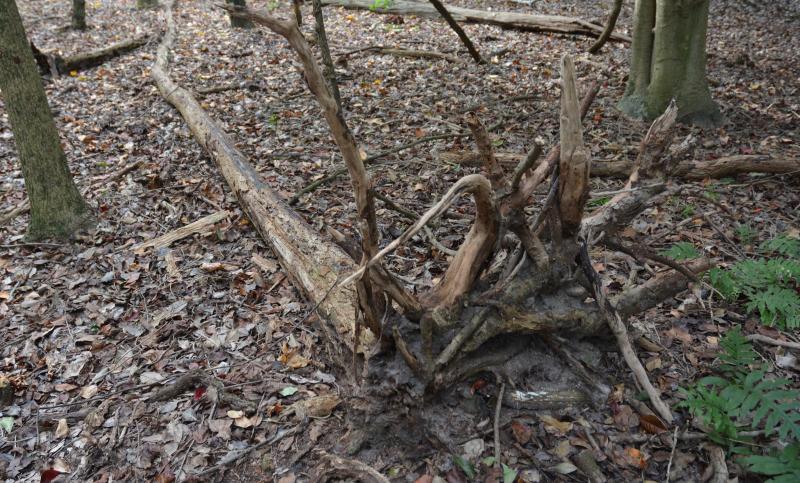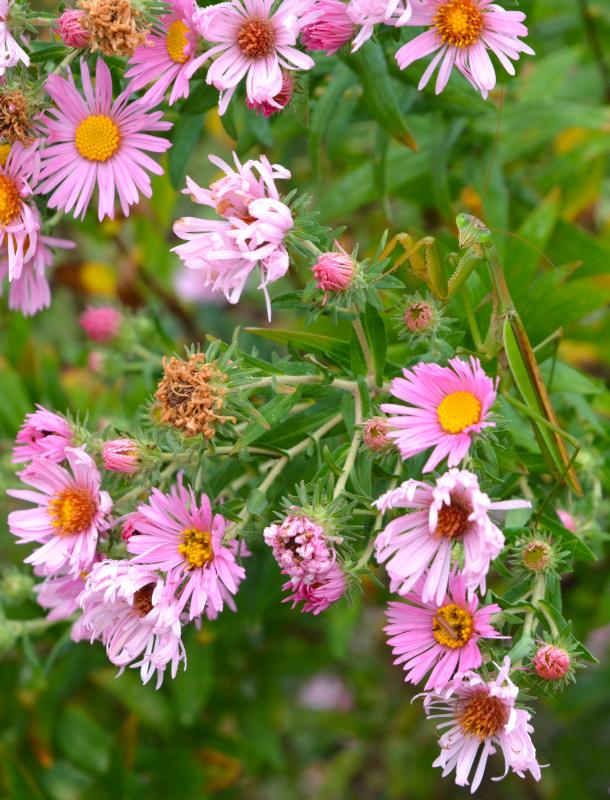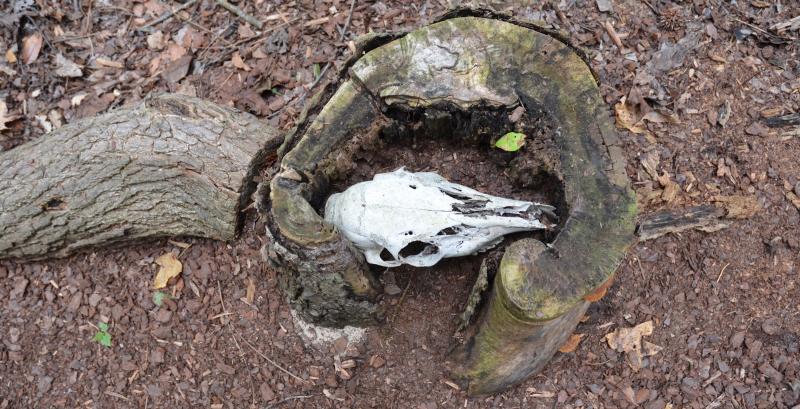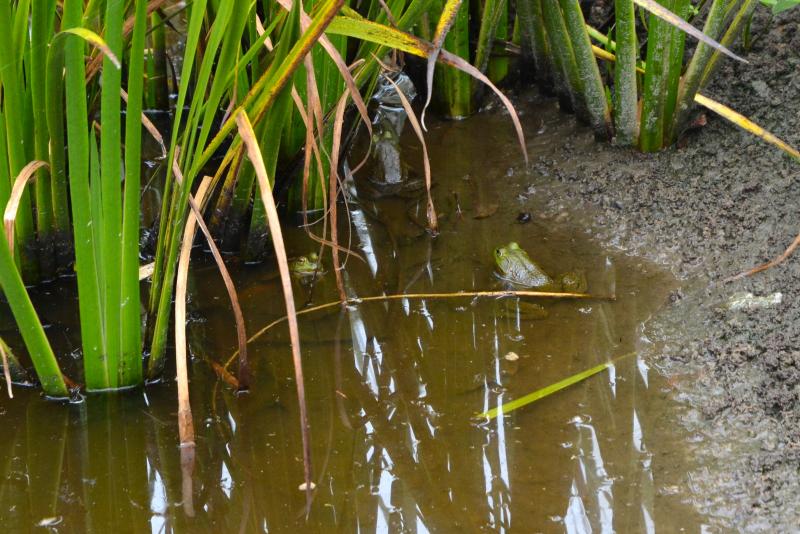Botanic gardens’ shoreline stabilizing project makes progress
It’s been about a week since sand was placed along the Delaware Botanic Gardens’ Pepper Creek shoreline, and Brian Trader said a newly constructed anchored-branch toe is already doing its job.
The sand was white when it was put here, but it’s beginning to silt in, which is why it looks so dirty, said Trader, Delaware Botanic Gardens deputy executive director and director of horticulture. The sand is the naturally occurring base for other plant life found along the shoreline there, he said.
For the better part of 2020, Delaware Botanic Gardens staff and volunteers have been hard at work completing a shoreline stabilization project, which includes an anchored-branch toe hundreds of feet long and thousands of grass plantings.
During an interview and tour of the project Sept. 25, Trader said it was a little more than halfway complete. The anchored-branch toe is all but finished, he said, adding the next step will be to plant six different types of shoreline grass.
Trader said 95 percent or more of the anchored-branch toe is constructed from fallen branches and trees found around the DBG’s Woodland Gardens trail. There are some bolts and waxed hemp rope holding things together, but that’s it, he said.
Trader said the expected lifespan of the anchored-branch toe is up to five years. The idea is that it will slowly become part of a newly formed shoreline as it disintegrates, he said.
At high tide, a significant portion of the toe is covered, but people will still get a good look at the work being done at an area Trader called the Birds Nest Revetment, found at the water access point of the Woodland Gardens trail. The revetment is made up of 6-foot-long logs with sticks and branches found on site; sand has been brought in to flatten out the slope of the shoreline, and dead greenbrier rhizomes, pulled to make another portion of the Woodlands Trail this past winter, act as stuffing between the revetment and the sand.
Still to be completed are a viewing platform off the Woodland Gardens trail and the installation of four inverted tree root wads.
A lot of the work this summer has focused on the stabilization project, but as always, other areas of the Botanic Gardens are showing off too.
The Meadow Garden, conceived by famed Dutch garden designer Piet Oudolf, isn’t in full bloom, but Trader said the space has been designed for something to always be on show. Peak bloom is June, he said, but right now the bluestem has changed to a beautiful rainbow of colors and some of the bushes are blooming.
Hundreds of praying mantises, getting ready to lay their egg pouches on the tall, sturdy grasses, have also set up shop in the meadow. Walking along the trail, Trader found dozens of the mantises. At one point, he saw a bush with six in one small area.
Trader said the mantises are attracted to the native plants, and they’re good to have around because they’ll eat nuisance bugs. He said when the grass is trimmed back for the winter, staff and volunteers will keep an eye out for the egg sacks so they can be preserved.
Trader will talk in greater detail about the shoreline stabilization project during a Center for the Inland Bays Citizens Café meeting at 6 p.m., Thursday, Oct. 15. The discussion will take place virtually, and preregistration is required. Details can be found on the center’s website at inlandbays.org/about/committees/citizens-advisor.
For more information on Delaware Botanical Gardens, go to delawaregardens.org.
For more information on the Citizen’s Café, go to inlandbays.org, or call Lisa Swanger at 302-226-8105 or email lswanger@inlandbays.org.



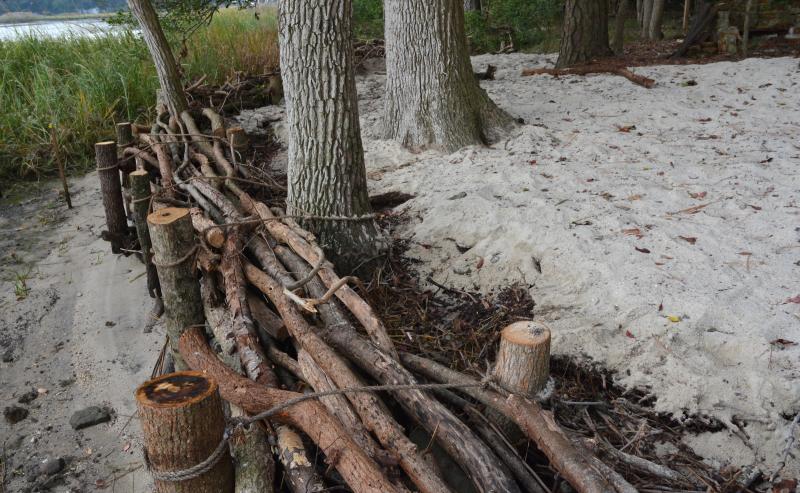
Chris Flood has been working for the Cape Gazette since early 2014. He currently covers Rehoboth Beach and Henlopen Acres, but has also covered Dewey Beach and the state government. He covers environmental stories, business stories and random stories on subjects he finds interesting, and he also writes a column called Choppin’ Wood that runs every other week. Additionally, Flood moonlights as the company’s circulation manager, which primarily means fixing boxes that are jammed with coins during daylight hours, but sometimes means delivering papers in the middle of the night. He’s a graduate of the University of Maine and the Landing School of Boat Building & Design.













